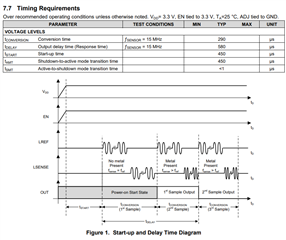Other Parts Discussed in Thread: LDC1312, LDC1001, LDC1101
Couple of questions around this IC or recommended replacements
Looking for experience on response times of these type of ICs. Are talking uS or Milliseconds ?
Will they work with non ferromagnetic metals like lead with 30mm coils.
What will be better objecj moving through the center of the coil or parallel past the face of the coil(s)





